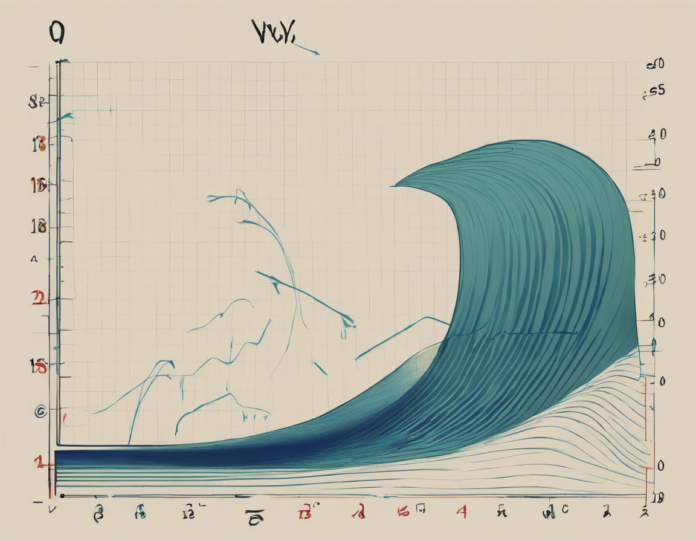Introduction
When we think of sound, we often associate it with the audible experience of hearing. Sound is a form of energy produced by vibrations that travel through mediums such as air, water, or solids. These vibrations propagate as waves, with two main classifications: transverse waves and longitudinal waves. In this article, we will delve into the intricate world of longitudinal waves, specifically focusing on their characteristics, behavior, and applications in various fields. Understanding longitudinal waves is crucial not only in comprehending the nature of sound but also in fields like engineering, physics, and even medicine.
Characteristics of Longitudinal Waves
1. Compression and Rarefaction: Unlike transverse waves where the medium moves perpendicular to the direction of the wave, longitudinal waves involve oscillations along the same axis as the wave's propagation. This motion creates areas in the medium where particles are densely packed, known as compression, and regions where particles are spaced farther apart, called rarefaction.
2. Vibrational Movement: In a longitudinal wave, particles within the medium oscillate back and forth in the same direction that the wave travels. This means that as the wave moves through the medium, energy is transferred parallel to the wave's direction.
3. Speed of Propagation: The speed at which longitudinal waves travel through a medium depends on the medium's properties, such as density and elasticity. In general, sound waves, which are a common example of longitudinal waves, travel faster in solids, slower in liquids, and slowest in gases due to differences in these properties.
4. Wavelength and Frequency: The wavelength of a longitudinal wave is the distance between two consecutive points in phase, such as two compressions or two rarefactions. Frequency, on the other hand, refers to the number of oscillations per unit of time and is directly related to the pitch of sound in the case of acoustic longitudinal waves.
Behavior of Longitudinal Waves
1. Reflection: Similar to transverse waves, longitudinal waves exhibit the phenomenon of reflection when they encounter a boundary or a different medium. This reflection can result in phenomena like echoes in sound waves, where the reflected wave reaches the observer's ear distinctly after the initial sound.
2. Refraction: Longitudinal waves can also undergo refraction when transitioning from one medium to another with different properties. This bending of the wave's path occurs due to changes in the wave's speed as it enters a new medium, causing it to change direction.
3. Interference: When two or more longitudinal waves meet in the same medium, they can interfere with each other in various ways. Constructive interference amplifies the combined wave, while destructive interference results in a reduction of the wave's amplitude.
Applications of Longitudinal Waves
1. Medical Imaging: One significant application of longitudinal waves is in the field of medical imaging, particularly through techniques like ultrasound. Ultrasound uses high-frequency sound waves to create images of internal body structures, aiding in diagnostics without invasive procedures.
2. Non-Destructive Testing: Longitudinal waves are crucial in non-destructive testing methods used in industries such as engineering and manufacturing. Techniques like ultrasonic testing utilize longitudinal waves to detect flaws or inconsistencies in materials without causing damage to the tested object.
3. Seismic Exploration: Longitudinal waves play a vital role in seismic exploration to study the Earth's subsurface and locate valuable resources like oil and gas. By analyzing the behavior of longitudinal waves as they propagate through different layers of the Earth, geophysicists can infer geological structures.
4. Acoustic Engineering: Longitudinal waves are fundamental in the field of acoustic engineering, where the behavior of sound waves in various environments is studied and manipulated. This knowledge is applied in designing structures for optimal sound insulation, concert hall acoustics, and even noise cancellation technologies.
Conclusion
Longitudinal waves, with their unique characteristics and behaviors, form the foundation of our understanding of sound and its applications across diverse fields. By comprehending the science behind longitudinal waves, we can appreciate the role they play in our daily lives, from the music we listen to, to advanced medical diagnostics and seismic exploration. As researchers continue to explore the intricacies of longitudinal waves, their significance in shaping modern technologies and scientific advancements remains undeniable.
Frequently Asked Questions (FAQs)
1. What is the main difference between longitudinal and transverse waves?
Longitudinal waves involve particle oscillations parallel to the wave's direction, while transverse waves exhibit perpendicular motion. Sound waves are common examples of longitudinal waves, whereas light waves are transverse.
2. How do we calculate the speed of a longitudinal wave in a medium?
The speed of a longitudinal wave in a medium is determined by the medium's properties like density and elasticity. It can be calculated using the formula: speed = frequency x wavelength.
3. What are some everyday examples of longitudinal waves besides sound?
Apart from sound waves, seismic waves generated during earthquakes are another example of longitudinal waves that propagate through the Earth's crust.
4. In what ways are longitudinal waves utilized in the field of engineering?
Longitudinal waves are crucial in non-destructive testing methods, such as ultrasonic testing, for detecting flaws in materials without causing damage. They are also utilized in acoustic engineering for designing optimal sound environments.
5. Can longitudinal waves exhibit interference patterns like transverse waves?
Yes, longitudinal waves can undergo interference when two or more waves meet in the same medium. This interference can result in either amplification (constructive interference) or reduction (destructive interference) of the wave's amplitude.

